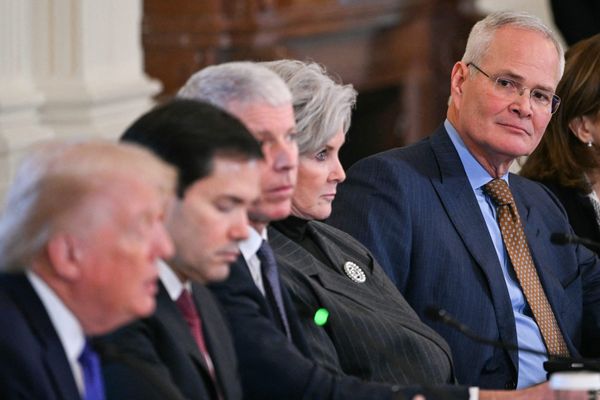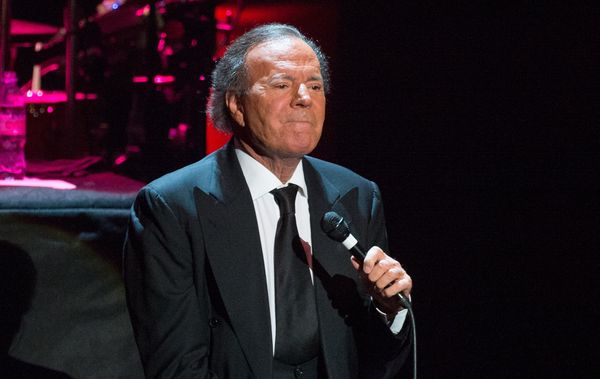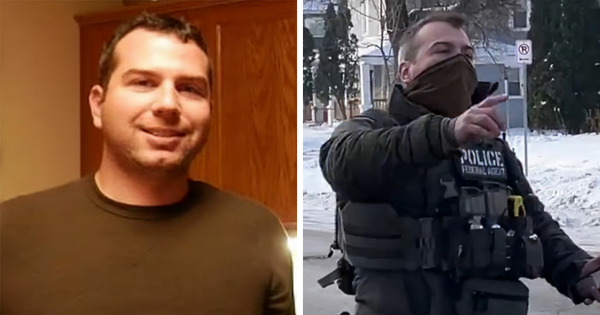
On a wintry afternoon in the Snowy Mountains town of Cooma a month ago, about a dozen officials from Snowy Hydro, its Future Generation partners and unions huddled in a meeting room to take stock of the much-delayed Snowy 2.0 project.
Of primary concern was the status of giant tunnel boring machine number three, dubbed Florence by Snowy, that had been stuck in soft rock for almost half a year after barely drilling more than its 140-odd-metre length. A large sinkhole had also opened up, reaching the surface.
“A bit of movement has already happened,” the gathering was told, according to minutes seen by Guardian Australia. “We are heading in the right direction.”
One senior official said: “It was promising progress in terms of the stability of the sinkhole. We still need to do some further conservation works to move another metre. It’s a trial-and-error approach.”
That legions of engineers failed to identify the sandy soil so close to the start of a 17km tunnel that one day will siphon water from Tantangara reservoir to an underground power station didn’t inspire confidence that other perils don’t lie ahead.

Budget blowout
Snowy 2.0 was originally touted in 2017 by the then prime minister Malcolm Turnbull as a $2bn project to increase the capacity of the huge Snowy Hydro scheme by 50%, or 2,000MW. Outsiders now expect little change from $10bn. The cost of extra transmission to link 2.0 to the grid will add many billions more.
Last month Snowy’s new chief executive, Dennis Barnes, admitted the completion date had now slipped to 2029-30. The 2017 feasibility report promised “first energy generation” by late 2024.
“The need for large-scale storage will only increase in the future,” the utility enthused back then. “Snowy Hydro could look to replicate Snowy 2.0 to create up to 8,000MW of pumped hydro storage at this site.”
Barnes has enough on his to-do list without contemplating a 3.0 or beyond. Assuming Florence gets approval to restart from the New South Wales government – it is after all clearing, drilling and blasting within a national park – much has to go right to avoid further delays.
The original scheme cost 121 lives over more than two decades of construction, an intolerable level today. The coroner, though, is examining the death of a truck driver in April, and there is a still-unresolved scramble to find missing explosives. Some workers also worry privately about crews being forced to travel the winding mountainous roads because of the lack of site accommodation, and other cost-cutting measures.

Asked by Guardian Australia whether 2.0’s already-revised $5.9bn cost – which excludes many items, not least debt interest – will increase, Barnes answers directly: “Yes.”
That new sum will take a couple more months to assess, and then will require Italian partners Webuild to sign up to the revamped timetable and conditions. The existing engineering procurement and construction contract “doesn’t work for anybody”, Barnes says.
“It’s quite common, particularly more recently, to reset EPC contracts when they start to lose money for the contractor,” the affable engineer says. “My primary focus in that negotiation is getting a collaborative program together which is achievable.”
Barnes won’t comment on the escalating costs but he notes the likely revenue from the ability to supply 500,000 homes with enough power for a week will also be revised higher given how much wholesale electricity prices have risen recently.
Snowy’s board will “look at the whole of the company’s economics, with and without the project”.
As to whether there’s a price tag too big to allow 2.0 to proceed, “you never say never”, he says, but adds, “I didn’t come out of semi-retirement to run something that wasn’t economic”.
Barnes says he is confident Florence can make good progress given 33,000 metres of geology “across this long tunnel” has now been assessed by drilling, and there is a new slurry plant to process soft ground when the borer hits it.

Delivery risk v reward
Since its inception, 2.0 has attracted surprisingly little political scrutiny given its scale. The then Labor opposition leader, Bill Shorten, came perhaps the closest to deriding it, saying he wanted to see the business case before backing it.
“Mr Turnbull needs to make up his mind – is he for the future and lower prices and renewable energy or … just a few ‘Washington monuments projects’ which he likes to fly around and likes to be photographed visiting,” Shorten told reporters in 2018.
The federal government has extended its support for 2.0 but not its former chief executive Paul Broad, who resigned in August. Some officials have privately criticised his performance but Broad pointed to the Australian National Audit Office’s finding that the project’s early implementation was “effective” and its contract management and reporting to the board was “appropriate”.
“The Albanese government is extremely disappointed that the Coalition hid delays to Snowy 2.0 before the election despite the previous minister, Angus Taylor, and Snowy management being aware the project was behind time,” says a spokesperson for the energy minister, Chris Bowen.
“The minister has engaged closely and constructively with the new CEO, Dennis Barnes, who is working to get the project on track, and improving transparency with the public about the project and any obstacles,” he says.
Snowy Hydro’s own credit rating hinges on the ongoing support from the commonwealth, S&P Global said in an assessment. Indeed, the government has little choice.
“We believe a credit stress on Snowy Hydro could have cascading effects on the energy market,” S&P said. “The effects could take the form of higher energy costs and pose a risk to system stability, given the company is the largest capacity provider in the energy market.”

Still, despite the latest two-year delay and an unrelated one-year delay for Snowy’s new gas plant being built near Newcastle in NSW, Snowy’s woes were not discussed at last month’s energy ministers meeting, two people with knowledge say.
The office of NSW’s energy and environment minister, Penny Sharpe, deflected queries about 2.0 to the commonwealth. That’s despite her departments needing to tick off revised permits for Florence and oversee catapulting power costs for NSW consumers.
Sharpe’s predecessor, Matt Kean, the energy minister and treasurer in the Perrottet government until the Coalition’s electoral defeat in March, says he designed the state’s plan to fast-track renewable energy to avoid reliance on 2.0’s timing.
“We always thought there was delivery risk with Snowy,” he says. “It’s mind-boggling how big this is.
“With Snowy, it’s two [gigawatts] of long-duration storage, and they’ve sunk a lot of money into it,” Kean says. “Part of me is, I love pumped hydro, I think it’s a great project, but I also think it’s a very expensive way to get two gigs of energy.
“The advice I had at the time is there’s delivery risk around the build of the generation, but also delivery risk around the build of HumeLink, and we’re still seeing that play out,” Kean says.

HumeLink is part of the extra transmission needed for 2.0’s output to reach customers in Sydney or Melbourne. Both Snowy Hydro and the commonwealth managed to avoid being lumbered with the cost, which will instead be shouldered by Victoria and NSW.
At the time, the then NSW premier, Gladys Berejiklian, said the sale proceeds would trigger an “investment bonanza in regional NSW … We bargained hard. We made sure NSW taxpayers and NSW citizens got a great deal from the commonwealth,” she said.
According to Bruce Mountain, director of the Victoria Energy Policy Centre and a longtime critic of 2.0, HumeLink alone may cost $4.5bn – or more than the $4.15bn NSW received for the Snowy share sale.
A spokesperson for Transgrid says it “remains committed” to completing HumeLink by 2026, with costs estimated at $3.3bn “in 2020 dollars”.
Mountain says the federal government missed a chance to launch an independent assessment of the project when it installed Barnes as boss. There’s still time for one.
“There are so many reasons to allow outsiders in and allow them to opine” over its viability, Mountain says. “It desperately needs someone [to review 2.0] given the enormous problems that exist.”
‘Throw-the-kitchen-sink moment’
The National Parks Association, which has argued for years that 2.0 doesn’t stack up, says it is causing enormous permanent damage to Kosciuszko national park and lumbering taxpayers with a bottomless pit of costs and risks.
“At $2bn, Snowy Hydro said Snowy 2.0’s economics were fantastic,” Ted Woodley, an NPA campaigner, says. “Then, at $3.8bn, they were even better, and at $6bn-plus, they’ve improved again. How can this be?”
With a total tunnel length of 27km, Snowy 2.0 is more than twice the length of any other pumped hydro scheme in the world. “Very few are more than 5km, [Snowy’s existing] Tumut 3 is 600 metres,” Woodley says. “The unprecedented tunnel length maximises the costs, risks and water friction losses.
“Snowy 2.0 is the worst possible project in the worst possible location – there are far better alternatives,” he says.
Environmental risks also range from the loss of visual amenity in the park from power lines to the potential undermining of Nungar Creek and Eucumbene River, with the loss of surface water.

Snowy Hydro’s Barnes, though, says much is riding on 2.0’s success – not least the decarbonisation of the electricity grid. Many new renewable energy plants are needed to replace ageing coal-fired power stations.
“It’s a throw-in-the-kitchen-sink moment for the industry,” he says. The availability of “deep storage” to cover periods of cloudy days or little wind will be critical.
“We’re trying to tackle one of the hardest parts of the transition. And it’s one of the most complex projects to deliver in that transition.”







